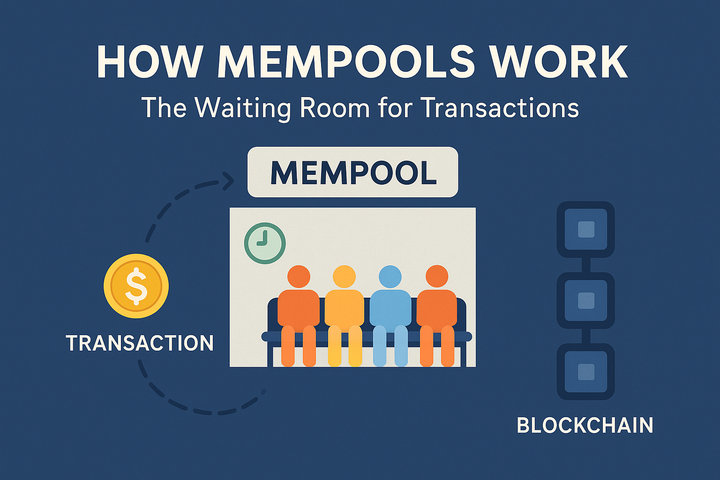DeFi Back Office: The Hidden Infrastructure That Keeps Protocols Alive

Introduction
Decentralized Finance (DeFi) has revolutionized the financial landscape by providing open, permissionless access to financial services. While the front-end applications of DeFi, such as decentralized exchanges (DEXs), lending platforms, and yield farming protocols, often capture the spotlight, the back office the hidden infrastructure that supports these protocols is equally crucial. This article delves into the various components of the DeFi back office, including alert systems, transaction relays, automation bots, multisig triggers, and other invisible layers that ensure the smooth operation of DeFi protocols.
1. Understanding the DeFi Ecosystem
Before diving into the back office, it is essential to understand the broader DeFi ecosystem. DeFi encompasses a wide range of financial services built on blockchain technology, primarily Ethereum. These services include:
- Lending and Borrowing: Platforms like Aave and Compound allow users to lend their assets and earn interest or borrow assets by providing collateral.
- Decentralized Exchanges (DEXs): Protocols like Uniswap and SushiSwap enable users to trade cryptocurrencies without intermediaries.
- Yield Farming: Users can provide liquidity to protocols and earn rewards in the form of tokens.
- Stablecoins: Cryptocurrencies pegged to traditional assets, such as USDC and DAI, provide stability in the volatile crypto market.
While these applications are user-facing, they rely on a robust back office to function effectively.
2. The Importance of Back Office Infrastructure
The back office in DeFi refers to the behind-the-scenes processes and systems that ensure the functionality, security, and efficiency of DeFi protocols. This infrastructure is critical for several reasons:
- Security: DeFi protocols handle significant amounts of capital, making them attractive targets for hackers. A robust back office can help mitigate risks and enhance security.
- Efficiency: Automation and transaction relays streamline operations, reducing the time and cost associated with manual processes.
- User Experience: A seamless back office contributes to a better user experience by ensuring that transactions are processed quickly and accurately.
- Compliance and Governance: As DeFi matures, compliance with regulations and governance mechanisms becomes increasingly important. The back office plays a role in implementing these frameworks.
3. Key Components of the DeFi Back Office
1. Alert Systems
Alert systems are essential for monitoring the health and performance of DeFi protocols. These systems can notify developers and users of critical events, such as:
- Smart Contract Vulnerabilities: Alerts can be triggered by unusual activity or potential exploits in smart contracts.
- Liquidity Issues: Monitoring liquidity pools for significant withdrawals or imbalances can help prevent crises.
- Price Fluctuations: Alerts for sudden price changes can help users make informed decisions about their investments.
Resources:
- Fortify: A platform that provides security alerts for smart contracts.
- Tenderly: Offers real-time monitoring and alerting for Ethereum smart contracts.
2. Transaction Relays
Transaction relays are crucial for ensuring that transactions are processed efficiently and securely. They act as intermediaries that facilitate communication between users and the blockchain. Key functions include:
- Transaction Aggregation: Relays can bundle multiple transactions into a single one, reducing gas fees and improving efficiency.
- Broadcasting Transactions: They ensure that transactions are sent to the correct network and confirmed in a timely manner.
Resources:
- Infura: A popular service that provides reliable Ethereum transaction relays.
- Alchemy: Offers a suite of tools for developers, including transaction relays.
3. Automation Bots
Automation bots play a vital role in the DeFi back office by executing predefined actions based on specific conditions. These bots can perform various tasks, such as:
- Arbitrage: Bots can automatically execute trades across different exchanges to take advantage of price discrepancies.
- Liquidation: In lending protocols, bots can monitor collateral levels and trigger liquidations when necessary.
- Yield Farming: Bots can automatically move assets between different protocols to maximize returns.
Resources:
- Hummingbot: An open-source software that allows users to create and run trading bots.
- Zapper: A platform that automates yield farming and liquidity provision.
4. Multisig Triggers
Multisig (multi-signature) wallets are a critical component of DeFi governance and security. They require multiple signatures to authorize transactions, adding an extra layer of security. Multisig triggers can automate governance processes, such as:
- Proposal Voting: Automatically executing proposals once a certain threshold of votes is reached.
- Fund Management: Releasing funds for development or community initiatives based on multisig approvals.
Resources:
- Gnosis Safe: A popular multisig wallet solution for managing digital assets.
- Argent: A smart wallet that incorporates multisig features for enhanced security.
5. Oracles
Oracles are essential for bringing off-chain data onto the blockchain, enabling DeFi protocols to function effectively. They provide real-time price feeds, which are crucial for:
- Lending and Borrowing: Accurate price data ensures that collateral values are correctly assessed.
- Derivatives Trading: Oracles provide the necessary data for settling contracts based on real-world events.
Resources:
- Chainlink: A decentralized oracle network that provides reliable price feeds.
- Band Protocol: Another oracle solution that aggregates and connects real-world data to smart contracts.
6. Governance Frameworks
As DeFi protocols evolve, governance becomes increasingly important. Back office infrastructure can facilitate decentralized governance through:
- Voting Mechanisms: Implementing systems that allow token holders to vote on protocol changes.
- Proposal Management: Automating the submission and tracking of governance proposals.
Resources:
- Snapshot: A decentralized voting platform for governance proposals.
- Aragon: A framework for creating and managing decentralized organizations.
4. Challenges in DeFi Back Office Infrastructure
While the back office is crucial for the success of DeFi protocols, it faces several challenges:
- Security Risks: The complexity of smart contracts and the rapid pace of innovation can lead to vulnerabilities.
- Scalability: As DeFi grows, the back office must scale to handle increased transaction volumes and user activity.
- Regulatory Compliance: Navigating the evolving regulatory landscape can be challenging for DeFi protocols.
- Interoperability: Ensuring that different protocols and systems can communicate effectively is essential for a cohesive ecosystem.
5. Future of DeFi Back Office Infrastructure
The future of DeFi back office infrastructure is promising, with several trends emerging:
- Increased Automation: As protocols become more complex, automation will play a crucial role in managing operations efficiently.
- Enhanced Security Measures: The development of advanced security protocols and auditing tools will help mitigate risks.
- Interoperability Solutions: Projects focused on cross-chain compatibility will enable seamless interactions between different DeFi protocols.
- Regulatory Adaptation: As regulations evolve, DeFi protocols will need to adapt their back office infrastructure to ensure compliance.
Conclusion
The DeFi back office is a vital yet often overlooked component of the decentralized finance ecosystem. From alert systems and transaction relays to automation bots and multisig triggers, these hidden layers of infrastructure ensure that protocols operate smoothly and securely. As the DeFi landscape continues to evolve, the importance of a robust back office will only grow, paving the way for a more efficient and secure financial future.
Additional Resources
- DeFi Pulse: A website that tracks the total value locked in DeFi protocols.
- Messari: A crypto data aggregator that provides insights and analytics on DeFi projects.
- CoinGecko: A cryptocurrency data platform that offers information on DeFi tokens and protocols.



Comments ()